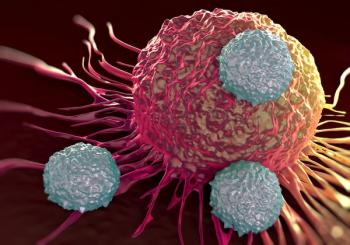
Oncology NEWS International
- Oncology NEWS International Vol 16 No 5
- Volume 16
- Issue 5
Communication Tool Empowers Nurses; Boosts Pt Safety
A structured communication tool helps oncology nurses effectively convey information and concerns to physicians when a patient's condition changes or a patient's care is in transition, which can promote patient safety and quality patient outcomes
LAS VEGASA structured communication tool helps oncology nurses effectively convey information and concerns to physicians when a patient's condition changes or a patient's care is in transition, which can promote patient safety and quality patient outcomes, according to a report presented at the 32nd Annual Congress of the Oncology Nursing Society (abstract 2143).
"JCAHO has determined that 70% of sentinel events are directly related to ineffective and poor communication between multidisciplinary healthcare workers," lead author Monique Willingham, RN, BSN, told ONI in an interview. She therefore took an opportunity to obtain training in a structured, systematic communication format called SBAR (Situation, Background, Assessment, Recommendation) (see Table).
This format is modeled on aviation and military procedures for handoffs and was developed in response to a major plane crash caused by poor communication, she explained. It ties together six components: patient safety, multidisciplinary communication, empowerment of providers, problem solving, standardization of communication handoffs, and flattening of the staff hierarchy.
Three-Phase Training Program
Ms. Willingham then developed an SBAR competency training program for the nurses on her inpatient oncology unit at the Johns Hopkins Hospital. The program has three phases, she said:
• A group education phase, during which nurses are introduced to the communication method.
• A one-on-one education phase, during which they receive training and engage in role play scenarios to build their comfort with the method.
• A real-time critique phase, carried out by witnessing verbal communication from the nurse to the physician and by auditing the nurse's written SBAR communications with physicians.
In response to findings of the last phase, she also developed an electronic "MD Notification Note" to further promote use of the method. On this standardized note, nurses complete each of the four SBAR components and indicate the physician notified and the time and date.
About 30 nurses were trained between October 2006 and February 2007, Ms. Willingham said. During that time, compliance with SBAR on the unit increased from roughly 60% to 80%. Moreover, after training, physicians reported that one-third of the nurses used the new method of communication always, very often, or sometimes.
Useful for New Graduate Nurses
"The SBAR method is very useful for the new graduate nurses who aren't familiar with the way the hospital works and who may be intimidated by the physicians," Ms. Willingham commented, noting that it helps them articulate information in ways physicians appreciate and stops physicians from cutting them off.
At the same time, the SBAR method allows more experienced nurses to exchange information more efficiently. "Just helping the nurses develop this better communication technique has improved the communication on our unit," she said.
Ms. Willingham pointed out that oncology nurses have a special skill set and a high level of training in their field, and offered a take-home message based on her unit's experience: "Don't be shy in what you have to say and when you have a concern or if you are worried about your patient. You are the patient's advocate, and it's important to be able to speak to your colleagues. This format will help you present your patient information in a direct and concise way, which will ultimately improve patient safety."
Articles in this issue
over 18 years ago
Escalating Drug Costs Could Provoke Consumer Backlashover 18 years ago
Large Study Casts Doubt on Value of CADover 18 years ago
Cetuximab Does Not Increase Mucositis in H&N Cancerover 18 years ago
2004 Update Shows Continued Lower Breast Ca Incidenceover 18 years ago
Reclast Single-Dose Infusion Approved for Paget's Diseaseover 18 years ago
Fragmin Approved for VTE in Cancer Ptsover 18 years ago
New Phase III Trial of Genasense in Advanced Melanoma Plannedover 18 years ago
Cervical Cancer Vaccines Show Sustained Protectionover 18 years ago
The 'New' Medicare: Passive Payer No More; PQRI Is First StepNewsletter
Stay up to date on recent advances in the multidisciplinary approach to cancer.





